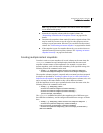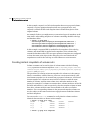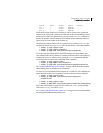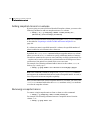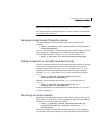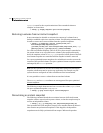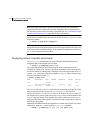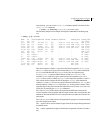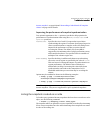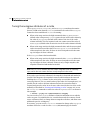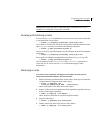
341Administering volume snapshots
Creating instant snapshots
snapshots remain, snapvol may be dissociated. The snapshot hierarchy is then
adopted by snapvol’s parent volume.
Note: To be usable after dissociation, the snapshot volume and any snapshots in
the hierarchy must have been fully synchronized. See “Controlling instant
snapshot synchronization” on page 344 for more information. In addition, you
cannot dissociate a snapshot if synchronization of any of the dependent
snapshots in the hierarchy is incomplete. If an incomplete snapshot is
dissociated, it is unusable and should be deleted as described in “Removing an
instant snapshot” on page 341.
The following command dissociates the snapshot, snap2myvol, from its parent
volume:
# vxsnap -g mydg dis snap2myvol
Note: When applied to a volume set or to a component volume of a volume set,
this operation can result in inconsistencies in the snapshot hierarchy in the case
of a system crash or hardware failure. If the operation is applied to a volume set,
the -f (force) option must be specified.
Removing an instant snapshot
When you have dissociated a full-sized instant snapshot, you can use the vxedit
command to delete it altogether, as shown in this example:
# vxedit -g mydg -r rm snap2myvol
You can also use this command to remove a space-optimized instant snapshot
from its cache. For details of how to remove a cache, see “Removing a cache” on
page 347.
Splitting an instant snapshot hierarchy
Note: This operation is not supported for space-optimized instant snapshots.
The following command breaks the association between a snapshot hierarchy
that has the snapshot volume, snapvol, at its head, and its parent volume, so that
the snapshot hierarchy may be used independently of the parent volume:
# vxsnap [-f] [-g diskgroup] split snapvolume|snapvolume_set



